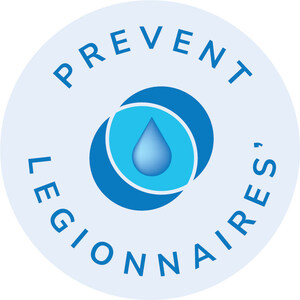Alliance to Prevent Legionnaires' Disease applauds U.S. EPA recommendation to increase minimum disinfectant levels and placing greater emphasis on protecting homes from legionella
WASHINGTON, Jan. 17, 2024 /PRNewswire/ -- The Alliance to Prevent Legionnaires' Disease (APLD) says new U.S. Environmental Protection Agency recommendations for legionella mitigation are a significant step forward in stopping the spread of the waterborne illness that is fatal in 10 to 30 percent of cases.
"We applaud the EPA for setting new guidelines to better ensure the safety of our water," said Tonya Winders, Executive Director of the Alliance to Prevent Legionnaires' Disease. "Preventing the spread of Legionnaires' Disease is attainable with the right preparation and planning. We are calling on state legislatures to use these recommendations as the basis for implementing better policies to minimize opportunistic pathogens like legionella in our drinking water system."
The Report of the Microbial and Disinfection Byproducts Rule Revisions Working Group contains 13 guidelines and includes a recommendation to "Raise the national minimum disinfectant residual requirement from the current value of 'detectable' and include a range for consideration of setting a minimum specific value of up to 0.5 mg/L for free chlorine and 0.7 mg/L for total chlorine for chloraminating systems."
"Many water systems maintain only a 'detect' level of disinfectant free chlorine, which is simply not an effective level especially when it comes to killing or controlling legionella growth, the bacteria that causes Legionnaires' Disease," said Dr. Hung Cheung, APLD Board Member and Founder & President of Cogency. "Increasing the minimum disinfectant level at the point of use is an important recommendation we have been advocating for a long time and it is one we hope all 50 states will use as their standard moving forward."
The Working Group also has a recommendation to, "Develop and implement a legionella public awareness campaign targeting smaller-scale building owner/renters (e.g., single family residences) to elevate improved building water quality management practices."
"We have ignored the lion's share of Legionnaires' Disease cases, which is individual, sporadic cases, for far too long," said environmentalist activist Erin Brockovich. "It is time to recognize the facts and focus on what is happening in people's homes. The recommendations are a big step forward in terms of improving water quality throughout the country."
According to the CDC, 96 percent of all Legionnaires' Disease cases are individual, sporadic cases and not related to outbreaks. Legionnaires' Disease is a waterborne illness, caused by Legionella bacteria, which is present in biofilms in water systems. Disruptions and changes in our water systems can increase the risk of exposure to legionella bacteria. and the best way to minimize this risk, is to take a root cause approach. The Alliance to Prevent Legionnaires' Disease is recommending the following steps for prevention:
- Increase investment in water infrastructure and technology that more effectively reduces or even eliminates Legionella bacteria from the water going through a water treatment plant and the municipal distribution system.
- Utilize the EPA, working with water utilities, to take a more active role in minimizing legionella in the public water systems, including more robust monitoring and testing programs.
- Notify communities, including buildings and individual homeowners, when disruptions in the water supply system have occurred, as these disruptions could lead to higher contaminant levels, including Legionella, entering the water systems inside the buildings and homes.
- Require public health officials to conduct comprehensive investigations of Legionnaires' disease cases, including sampling drinking water at multiple points, to ensure the bacteria's true source is found.
"We have seen a number of states such as Illinois incorporate these reforms into their water management requirements, but more states need to become more proactive in protecting the health of their residents," Winders said. "These guidelines are an important step in that process."
The full Working Group report can be found here: https://www.epa.gov/system/files/documents/2023-11/report-of-the-mdbp-rule-revisions-working-group-to-the-ndwac-november-2023_0.pdf
For more information on Legionnaires' Disease and the Alliance to Prevent Legionnaires' Disease, visit the Alliance's website: https://preventlegionnaires.org/.
SOURCE Prevent Legionnaires'

WANT YOUR COMPANY'S NEWS FEATURED ON PRNEWSWIRE.COM?
Newsrooms &
Influencers
Digital Media
Outlets
Journalists
Opted In





Share this article